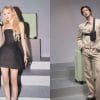“One single thread of gold tied me to you” – Invisible String, Taylor Swift.
It is an understatement to say that we cross paths with many people in a lifetime. Strangers gather at a crowded museum, collectively staring in awe at the intricate strokes of an oil painting, each having a different interpretation of how it makes them feel. People rush past each other through the morning bustle of a train station and file into the same classroom on the first days of school, all by chance.
Among the innumerable instances of crossing paths with people in different phases and walks of life, to quote Emma Morely, “It’s one of the great cosmic mysteries, how it is that someone can go from being a total stranger to being the most important person in your life”, as she says in Netflix’s tear-jerking adaptation of David Nicholls’ novel One Day.
Have you ever met someone and it seemed like something destined to happen? Coincidences are a real thing. However, sometimes, the closer we look, the more we find that things are often hidden in plain sight. The invisible String theory is an intriguing phenomenon travelling beyond the transcends of time, distance and circumstances that may explain this.
What is the Invisible String theory?
The invisible string theory revolves around romantic and platonic soulmates being tied together by the universe, almost as though it is etched and written in the stars for them to meet.
Dating back to an ancient East Asian legend called the Red String Theory, this refers to an invisible piece of red thread that ties you to your soulmate, surpassing factors such as time and circumstance. It is also known as the Red Thread of Fate or Destiny and applies to other bonds such as friendship and broader connections. It is believed that these threads may stretch and tangle but are links that never break, evoking strong connections to fate and destiny.
From novels to music and film, pop culture has explored different avenues of the Invisible String theory. In this article, we examine the portrayals of the theory in Taylor Swift’s song Invisible String and David Nicholl’s novel turned film and television series adaptation, One Day.
For anyone familiar with the details of David Nicholls’ One Day, it is no secret that Emma and Dexter’s story is a complexly layered chronicle that falls into categories of overlapping tropes and themes, where the Invisible String theory presents itself rather significantly.
One Day revolves around Emma Morely and Dexter’s Mayhew’s archetype ‘not knowing what has been in front of you all along’ coded relationship, steered by their painful lack of communication. The first and most apparent presence of their invisible string ties to the night they met: crossing paths unceremoniously on the night of their graduation, despite being in the same university for years.
Over the two-decade period covered in the book, they are taken on different paths and go through many stages of life, each full of highs and lows. Through these phases, their Invisible String remains intact in keeping them connected. Despite going in separate directions while exploring the world, they have been able to entwine themselves into each other’s lives at every stage.
In many ways, the portrayal and development of their characters underscore the central idea of the Invisible String theory: Though they are characterised by their radically different personalities and life aspirations, Emma and Dexter’s unexpected relationship envelopes a sense of fate as they somehow always find their way back to one another, ultimately becoming the most significant people in each other’s lives.
In the opening verse of Taylor Swift’s Invisible String, the song’s narrator recalls reading on the green grass of Centennial Park with a feeling that she would share a life with her future love there. While she spent her time at this park, in another part of the world, her future partner spent his days working at a Yogurt shop, wearing a Teal uniform.
The tune from Taylor’s artistically enchanting album Folklore details a symphonious story that treads through the passage of time, symbolising the role of fate in a relationship, down to the little details that intertwine people’s lives long before they meet.
Through the overlapping elements of colours in their lives and seemingly coincidental instances of the narrator’s future partner listening to her song in a cab and eating in her favourite restaurant on his first trip to Los Angeles, Swift delivers these details by painting a picture of the signs in their parallel lives as individuals that weave a full circle into their lives as a couple.
The existence of the Invisible String Theory can feel like something brought to life out of a chapter of a fairytale. Thinking about this rather baffling phenomenon invokes an idea that the people and things meant to find us will often do so in their own time.
The song winds into a poetic end that encapsulates the magic of Taylor Swift’s artistic vision with a picturisation of a wholesome romantic film, as the couple returns to the very place the song’s narrator imagined life with a soulmate, roaming among Centennial Park’s now golden leaves.



